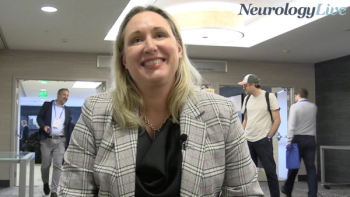
Neurological Examination and Guiding Clinicians in the Diagnosis of Multiple Sclerosis: Aliza Ben-Zacharia, PhD, DNP, ANP-BC, FAAN

The assistant professor at Hunter College discussed the approach of systematically localizing symptoms in patients with multiple sclerosis for diagnosis based on a clinical workshop. [WATCH TIME: 5 minutes]
WATCH TIME: 5 minutes
"Sometimes [diagnosis is] challenging because it's not always a focal area that gives you the signs of the symptoms. It can be multifocal, or it can be diffused like in tumefactive MS lesions or a combination of both. It can be one area and then a few other areas. I think as a clinician, nurse practitioner, physician, MS expert, we have the knowledge that we can apply to all patients and think about the systematic approach [for diagnosis].”
Diagnosing
Ben-Zacharia sat down in an interview with NeurologyLive® at the meeting to give a brief overview of the workshop and the main takeaways. She talked about how clinicians can apply a certain approach to localize symptoms and identify their origin from the central or peripheral nervous system. Ben-Zacharia also spoke about the significance of considering upper motor neuron symptoms versus muscle weakness in the neuromuscular junction when localizing the origin of signs. Additionally, she provided an analogy to help clinicians understand lesion localization in the nervous system and the specific functions the locations control.
REFERENCES
1. Oh J. Diagnosis of Multiple Sclerosis. Continuum (Minneap Minn). 2022;28(4):1006-1024. doi:10.1212/CON.0000000000001156
2. Ben-Zacharia A. Introduction and Clinical Pearls. Presented at: 2023 CMSC Annual Meeting; held May 31-June 3; Aurora, CO. CC4.
Newsletter
Keep your finger on the pulse of neurology—subscribe to NeurologyLive for expert interviews, new data, and breakthrough treatment updates.




































